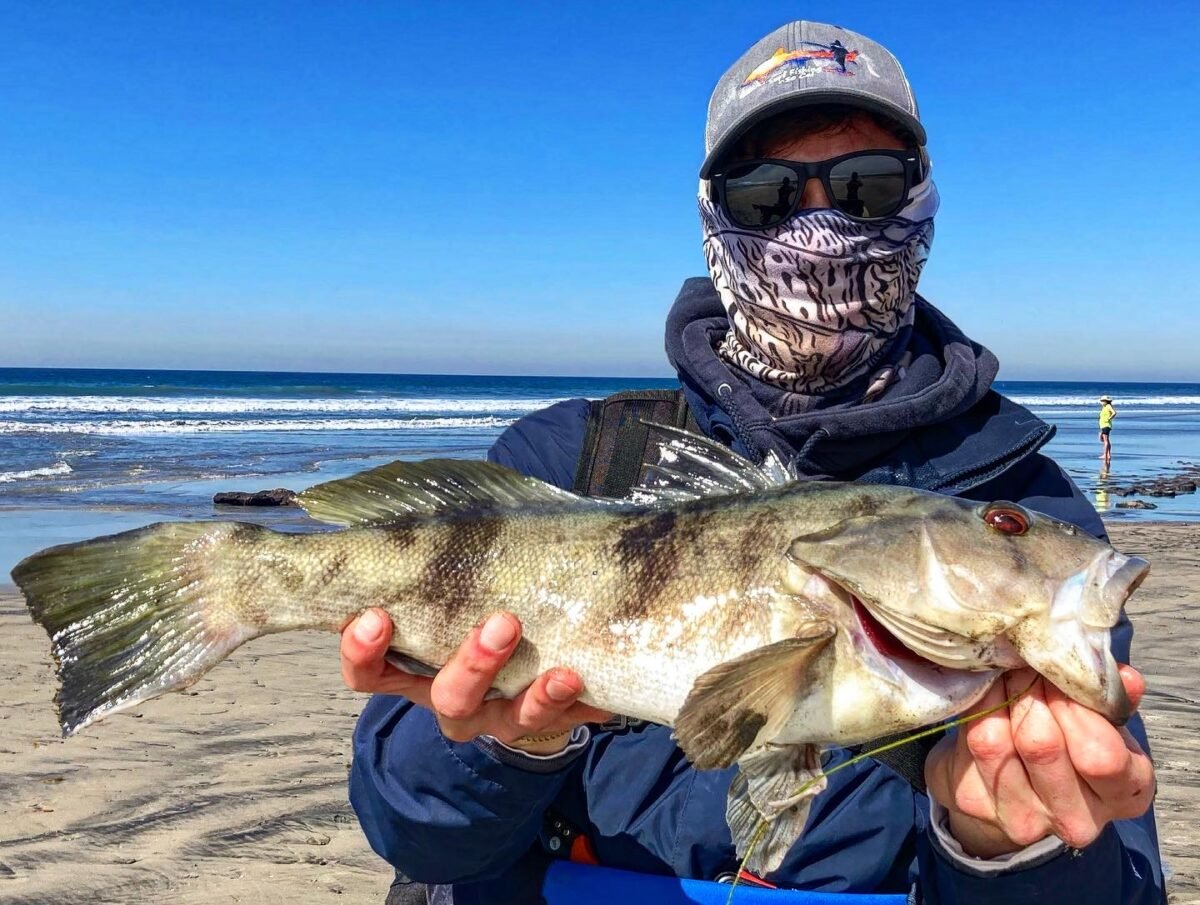Fishing and Grunion Runs: Should You Fish Before, During, After?

Grunion run fishing is a strategic approach to targeting predatory fish that feed on grunion during their spawning runs. Exclusive to Southern California, grunion runs occur on sandy beaches during the high tides of full and new moons in spring and summer. These small fish come ashore to spawn for three to four consecutive nights, attracting larger game fish like halibut, corvina, and sharks. Understanding whether to fish before, during, or after a grunion run can significantly impact your success in capitalizing on this feeding frenzy.
For the predicted schedule of this year’s grunion run dates, head on over to the linked article – Grunion Runs: Where, When, and How – surffishingsocalsd.com.
Grunion runs can make for fantastic fishing opportunities because they typically result in an abnormally high volume of bait in the water close to shore. When there’s a lot of bait close to shore, there’s likely a lot of bigger predatory fish close to shore too. Let’s talk about how to use a grunion run to your advantage, when to fish and what you might catch during a grunion run – as well as before and after.
Article Summary and Navigation
- Fishing Before a Grunion Run
- Fishing During a Grunion Run
- Fishing After a Grunion Run
- Which Day (of the run) is Best to Fish a Grunion Run?
- Is a Full Moon or New Moon Better for Grunion Runs?
Fishing Before a Grunion Run
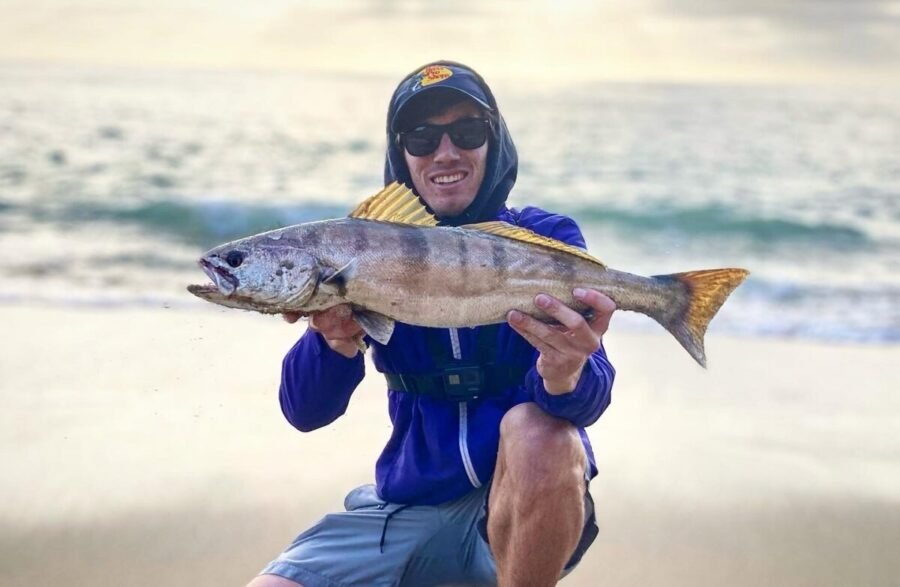
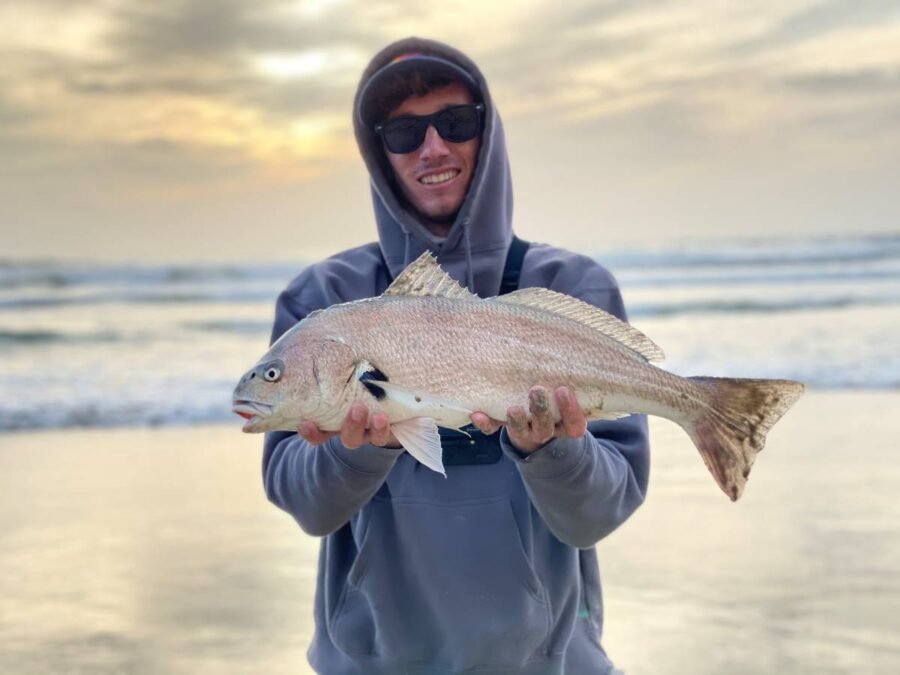
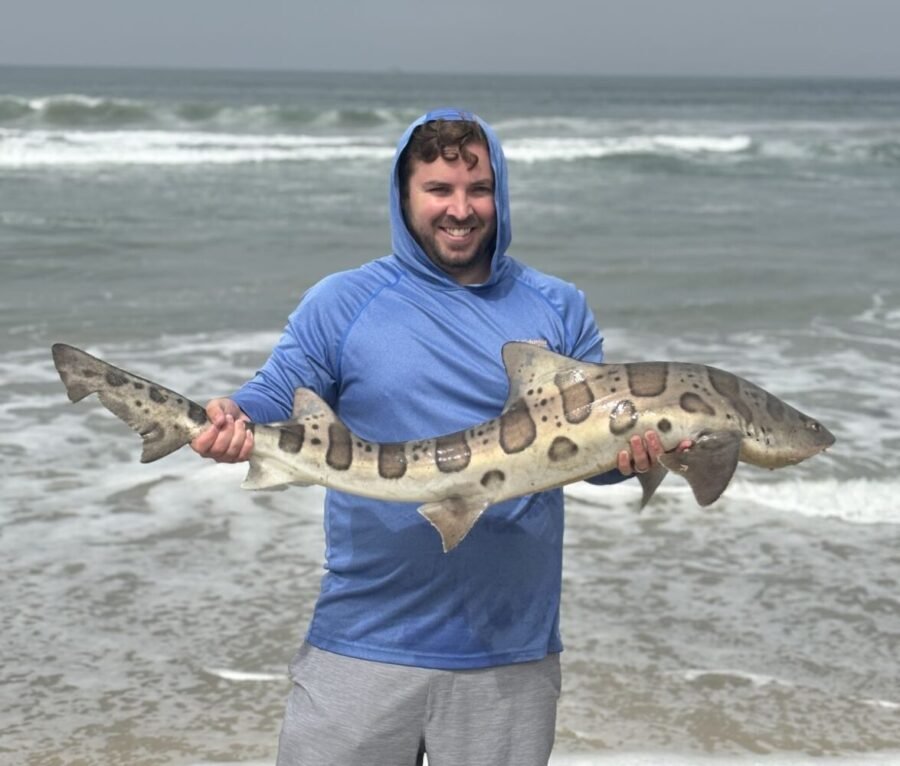
Light Tackle
Truthfully, you can catch all of the same common species of surf fish that you might catch on any other day of the year. But, you’ll have a better chance at catching certain species of fish if you head to the right beach at the right time.
Light tackle surf fishing for corbina and croaker is one of the less significantly impacted styles of surf fishing. However, it’s during the hours just before a grunion run that you should be targeting corbina, croaker, surfperch, guitarfish and other similar species. Since these species aren’t likely to become much more active during the nights of grunion runs, you want to take advantage of the rising tide and sunset bite leading up to a run. Your best bet is to stick to the basics and fish with a Carolina rig and sand crabs.
I’ve experienced only two specific instances in which a grunion run sparked a hot bite during the run while fishing with sand crabs. On those nights, we caught loads of chunky yellowfin croaker and guitarfish.
One thing to note is that these species typically become less active after dark so if the grunion aren’t running that night, you won’t have great luck. A smelly bait like squid could help but you’ll also attract lots of rays and baby sharks.
Lures
Generally speaking, the lure species along with the sharks and rays are most affected by grunion runs and in similar ways. While I do believe fishing for both species during the run offers highest potential, halibut, white seabass, calico bass and other species have been known to go on feeding frenzies during the sunset hour leading up to the night of a grunion run.
I especially like to utilize this tactic where I know there are deep troughs close in to shore near reef during an incoming high tide. Additionally, I like to fish the days prior to a grunion run around sunset because that high tide occurs right at sunset which offers a unique opportunity.
Sharks and Rays
Surf fishing for sharks before a grunion run offers nothing real different from surf fishing the morning after. It’s better odds than any normal day for a soupfin and maybe even still a little better odds for leopard sharks.
That said, the con is that these big tidal swing can make for amplified surf and current, and if it’s kelpy, it can ruin your outing. So, if the water is clean and surf is low, odds of hooking a shark the afternoon/evening before a grunion run occurs is extremely high.
Fishing During a Grunion Run

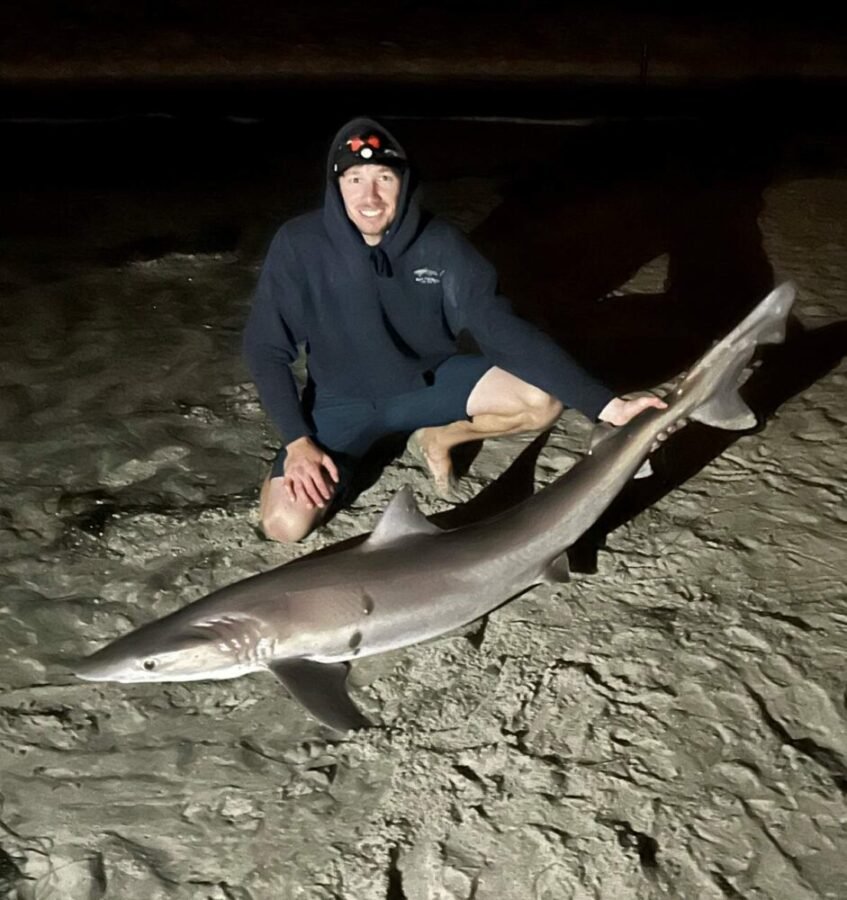

Light Tackle
I won’t touch on light tackle surf fishing during a grunion run much. It can be productive if the yellowfin croaker come in heavy or if there’s a good amount of guitarfish baby leopard sharks and smoothhound sharks or other species, but generally speaking, nothing’s going to beat that sunset bite.
Lures
The lure species is where potential increase is the greatest. But, it’s boom or bust and it’s typically boom (10%) and bust (90%). So be warned that it isn’t easy. When rough surf, current and seaweed meet a pitch black evening, fishing can be extremely difficult so any time you’re surf fishing a grunion run it truly is a gamble. Shark fishing is actually the easiest type of night fishing because you leave the rod in a holder and wait for the bite.
Surf fishing for halibut, white seabass and other predatory species during a grunion run can be accomplished utilizing either lures like swimbaits or by using live or dead grunion for bait during the open season for grunion.
All that said, your reward can be massive. Large white seabass, corvina and barracuda have been known to come in close to shore during grunion runs providing a unique opportunity for surf anglers in So Cal.
Sharks and Rays
During a grunion run, shark fishing can be great. Specifically, your odds of catching a soupfin shark increase fairly well. If you’re already there for the sunset bite, you might as well stick around a couple others for a chance to witness the grunion run and hook up on a big shark mid-frenzy.
Fishing during a grunion run can be one of the most productive times to catch sharks. Soupfin, leopard sharks, and even sevengill are known to feed more actively on nights of grunion runs. Your bait will remain the same as always in a fresh chunk of cut bait. Croaker, surfperch, mackerel and many similar types of cut bait will work just fine. Read the species links to learn more about how to target each.
For leopard sharks, all you need is a beach that has enough sand to sustain the inevitable high tide of a grunion run.
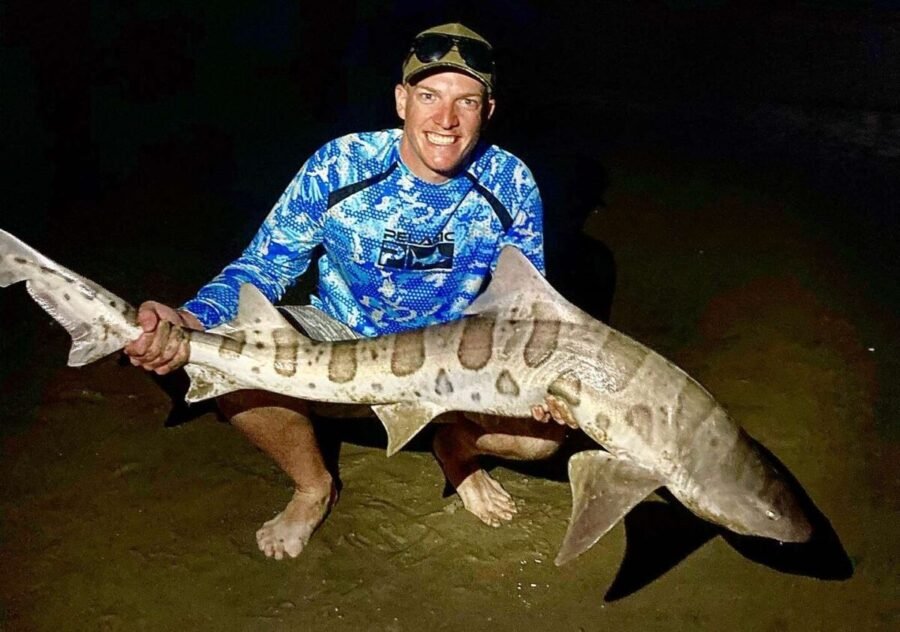
For soupfin sharks and sevengill sharks, step one is the same as it is for leopards, but while you need enough space to withstand the high tide, you also need some hard structure like rocks or reefs. These species like to hang out in areas with reefs nearby. Doesn’t need to be on a reef, just nearby.
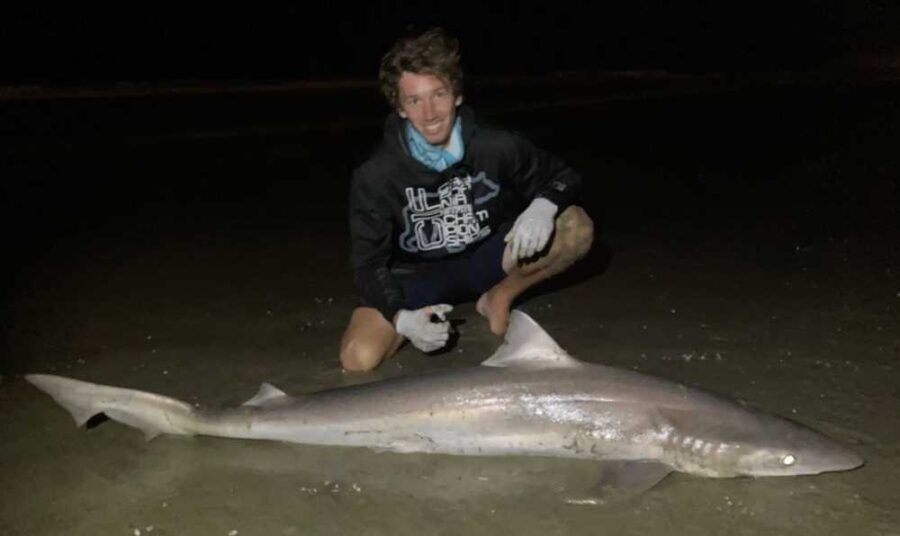
Fishing the Morning After a Grunion Run
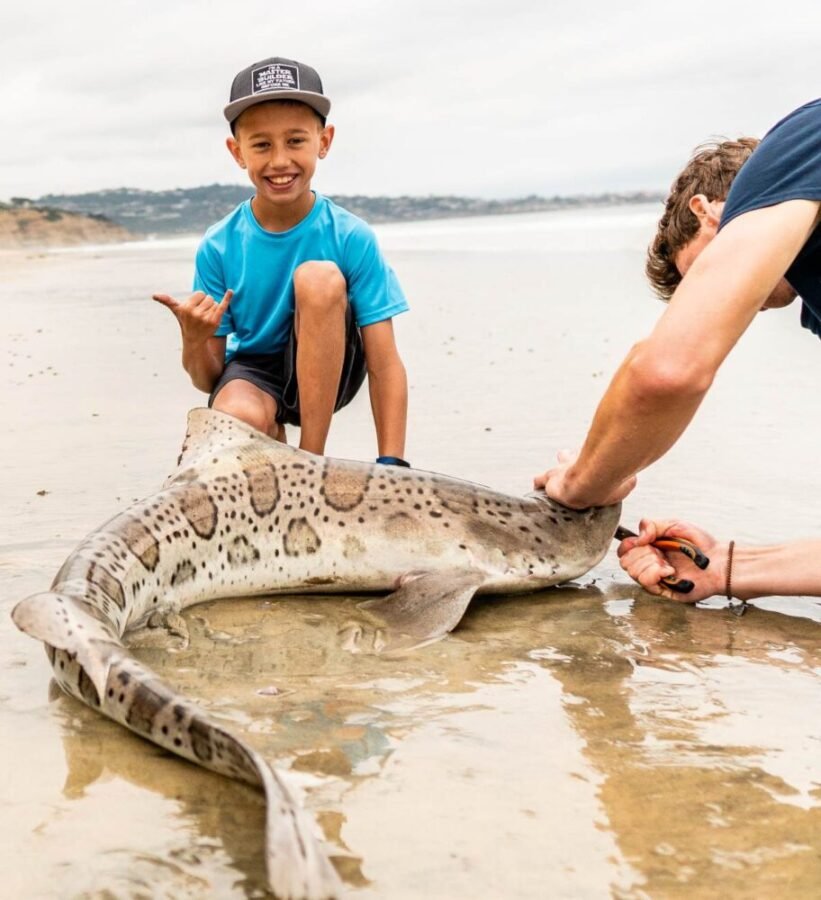
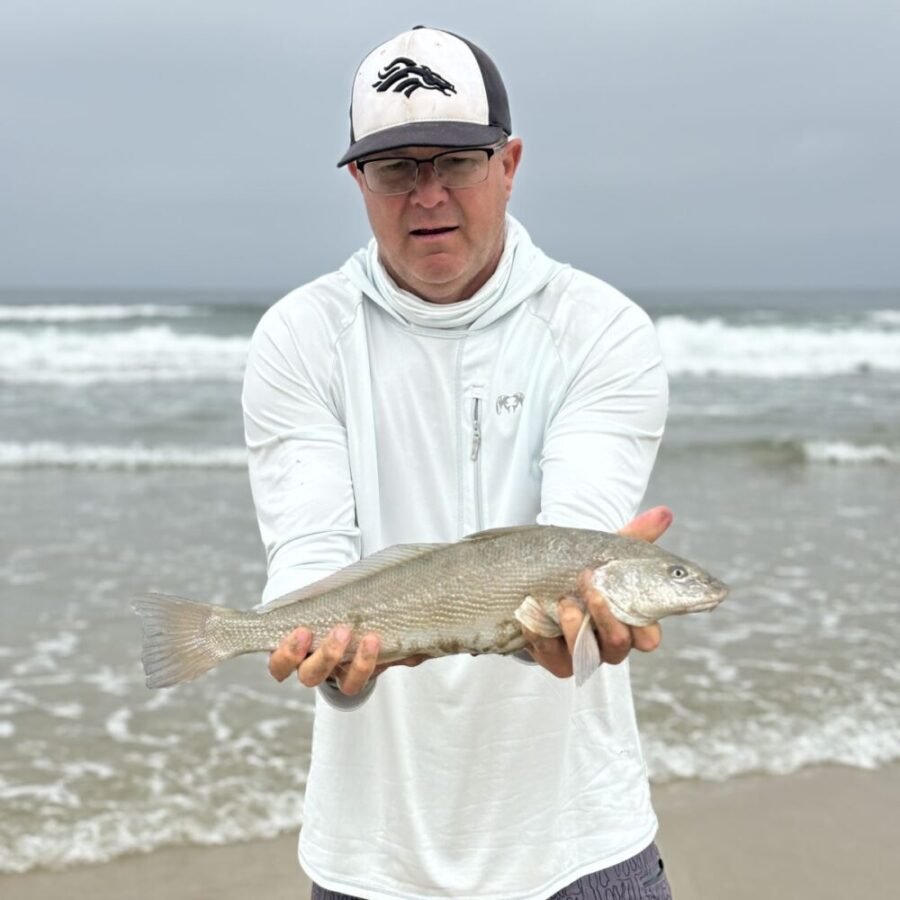
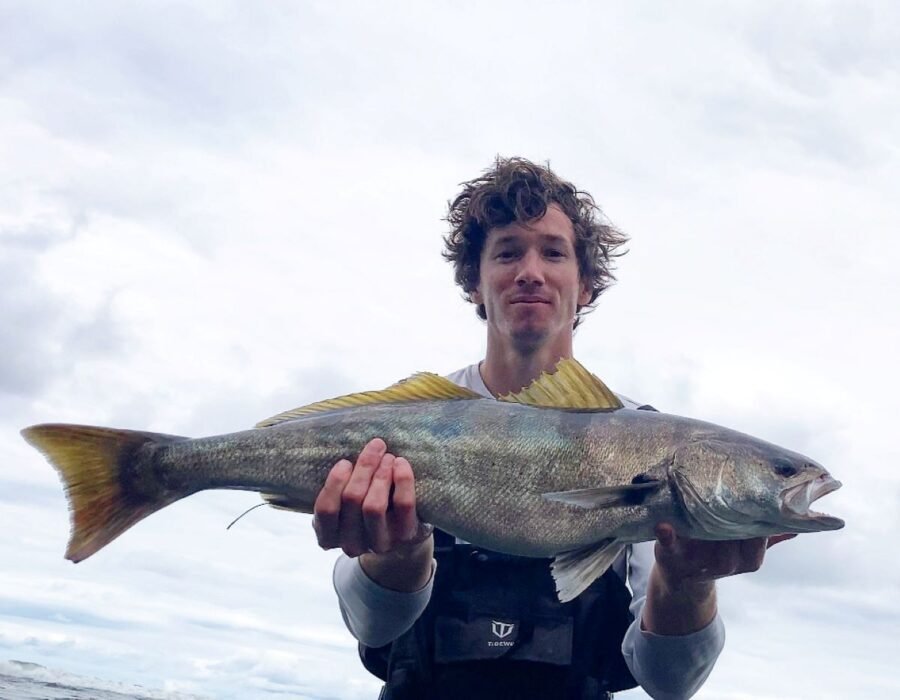
Light Tackle, Sharks and Rays
Light tackle and sharks as mentioned above can be very productive the morning after a grunion run. If those are what you’re after, do it! But, targeting the lure species is what’s most significantly impacted by the opportunity the morning after a grunion run presents.
Lures
For these species (halibut, white seabass, calico etc.), you’ll head to similar beaches you would for soupfin and sevengill and use their corresponding baits.
Why does a grunion make for better bait and wait fishing? Because calico and sand bass will feed on both dead bait and live baitfish. Naturally, they’ll follow the bait and they aren’t likely to pass up an easy meal like a ball of shrimp if it’s presented properly.
For halibut and white seabass, you’ll most likely use lures but if you can get your hands on live grunion the next morning somehow… use it. The same set up below works well for fishing with live grunion, but instead of a lure, use a Carolina rig and a 1-2/0 hook with a 20lb fluoro leader.
My Gear and Preferred Lures:
- Rod: Okuma SST-S-902HA – 1/2-2oz | 10-30lb | 9ft | H | MF
- Reel: Penn Spinfisher VI (3500 or 4500)
- Main Line: 30-pound braid
- Leader Line: 30-pound mono
- Lure Options:
- Lucky Craft FM 110 (jerkbait)
- Keitech Fat Swing Impact (4.8″) | Warbaits 0.5-ounce Weedless Jighead
- BioSpawn ExoSwim (4.75″) | Mustad KVD Grip Pin Swimbait Hook (5/0 | 1/8oz) (T Rigged)
It’s a good idea to target halibut and white seabass during, before and after a grunion run. Using live grunion during a run offers you a phenomenal opportunity to catch these predatory species. Even using lures during a run or in the afternoon/evening leading up to last light and the ensuing run is a good idea.
But, I would say the morning after presents a more consistent and convenient opportunity to target these species. Why? Well, two reasons.
- Daylight hours provide better visibility for fish that feed on bait and take on lures.
- The morning of a grunion run usually results in a grey light negative tide.
So what’s good about the low tide? I wrote about this in a recent article overviewing calico bass fishing from the surf.
Why Low Tide is Special
Structure can be submerged at fishable tidal heights (when structure is submerged enough to hold fish and in casting range) at high tide and low tide. But, the best structure is usually in areas where vegetation grows. You might not realize this, but most of So Cal’s (San Diego included) shoreline is lined with reefy, vegetation-filled structure.
Why don’t we see it, because vegetation grows only where the water is constantly providing it with nutrients. Which means it’s far enough out into the water that we can’t see it from the beach unless there’s a dramatic low tide.
This is where King Tides come in and this is why low tides are better for lure fishing in the surf.
Which Night of a Grunion Run is Best for Fishing?
I get this question quite often. The answer is complex. First and foremost, it depends which day’s conditions provide a better opportunity for your desired style of fishing and target. I look at the surf height, wind and tides and let that determine which species I’ll target and therefore which day I’ll fish (depending on availability).
If you’ve read this entire article, you should be able to determine which days of a grunion run will be best for fishing
Is Surf Fishing at Night Hard?
Surf fishing at night can be tough to figure out. You can’t rely so much on your vision and you’ll have to trust your instincts a bit more. Grunion runs can make night fishing worth while though so it’s certainly worth a shot. Before you go out, make sure you know how to plan for shore fishing at night.
Is a Full Moon or New Moon Better for Fishing?
I’ve always had better luck fishing during the full moon as opposed to the new moon. I might also add that most of my experience fishing full and new moons is for sharks so that’s worth noting.

